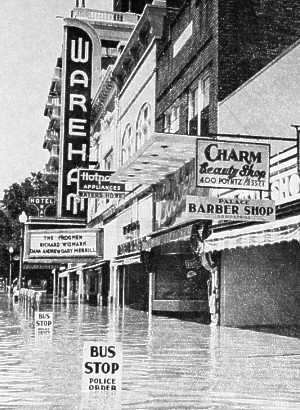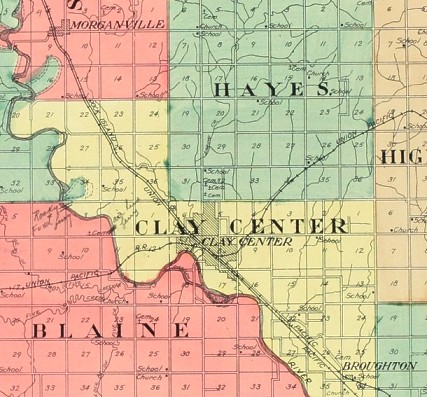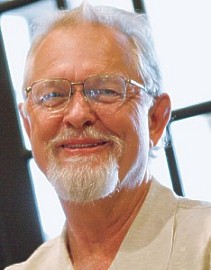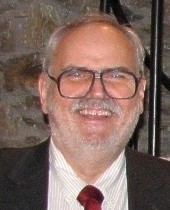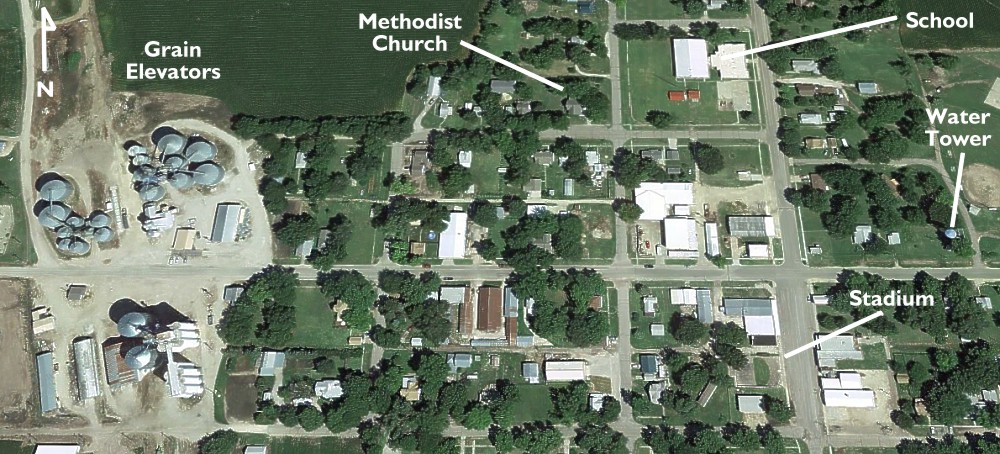Reconnection
In July of 1951, just six months after the broadcast of "A Prairie Noel," an event occurred that would contribute to reviving the story and reconnecting the two sisters many years later. In that month, the rain in north-central Kansas and surrounding areas began and continued for an extended period. Rivers flooded. Villages and towns, such as Manhattan, Topeka, Lawrence and Kansas City, were hard hit.
Although some summer flooding was not uncommon, the devastation in 1951 was unusually great. A call for action was
particularly loud from those larger cities along the Kansas River. This led to the creation of a federal project to
build flood-control dams along its tributaries. Although the Big Blue River was the main source of flood waters in
1951, a site was also selected for a dam on Morganville's Republican River near Junction City.
The motivation for creating the dams was flood abatement. But there were additional benefits in the form of aiding
shipping on the Missouri River by stabilizing water levels and providing recreational opportunities on the many
reservoirs created. But there were disadvantages as well. Some farmland and a few small villages would be submerged by
the impounded waters. Other land and villages would only be affected in years of heavy rains. While farming was still
permitted on such land, the villages were deemed unsuitable for habitation.
Part of Manhattan's business district during the
1951 flood. It was ironic
that the movie at the
Wareham theater was "The Frogman."
A few towns were relocated, while others were razed. Broughton, a small village southeast of Clay Center and just east
of the Republican River, was one of the latter. It was home to the Leo and Irene Chapman family. They, along with sons Mark
and Christopher and daughter Julie, lived on a farm just outside the village.
In practical terms, Mark, age 8 at the time of the flood, escaped the consequences of the dam that wouldn't be completed
until 1966. By that time, Chapman had graduated from the high school in Clay Center, completed a bachelor's degree at
KSU and then moved to Texas for additional schooling. After the dam was completed, he spent two years in the service and
then returned to Texas where he was very successful in business.
1918 map of central Clay County. Morganville
is at the upper left and Broughton at the
lower
right. The Republican River is to the west.
But Chapman never forgot the small town where he grew up and what happened there. Most villages in rural Kansas reached
their greatest population around 1880 and had been fading away slowly ever since. This was due primarily to the
consolidation of farms into ever-larger holdings with fewer farmers. This slow withering brought wistful memories
to the minds of village inhabitants. But Broughton's demise had been jarring, demolished in just a few days by the Army
Corps of Engineers.
In 2005, almost 40 years after his hometown was erased, Chapman approached KSU about creating a center that would help
preserve the history of early Kansas communities. His financial support and the university accepting his proposal led
to the creation of the Chapman Center for Rural Studies.
Mark Chapman
In the fall of 2012, Gloria Freeland, a professor in the A. Q. Miller School of Journalism and Mass Communications at
KSU, learned about the center. Always looking for "real-world" experiences for her fledgling journalists, she
decided to have the students in her spring 2013 class write articles about 10 small Clay County communities. It would
provide researching and writing experiences, while contributing toward the center's goal.
Much of that research took place at the Clay County Historical Society's museum, where curator Cathy Haney, also a
Broughton native, served as an important resource.
Gloria Freeland
By May of 2013, those stories were complete. The editor of the Clay Center Dispatch, the county's newspaper, wished to publish the articles, confident its readers would enjoy learning more about the area's history. Freeland first edited them with regard to mechanics and grammar. But with the decision to go public, Freeland wanted to guard against the mistakes young journalists frequently make.
So she asked her husband, Art Vaughan, to fact-check them. Vaughan, a historical researcher for more than 30 years, began
going through them, completing about one per week. He found all of them to be interesting owing to the important role
each community played in the lives of the people who lived in them or nearby.
It was late June when he began editing the Morganville story. It immediately stood out from the others. The villagers
had sought to help people half a world away whom they had never met and did so with money raised from an original
play and other projects spread over several years involving nearly the entire community.
Art Vaughan
Curious about the French village, Vaughan turned to the internet and immediately found an obituary for Billie (Pierson)
Utley. It mentioned the 1949 visit she and her husband Ed made to Fèves and included contact information for their son Mark. He
responded to Vaughan's e-mail and mentioned he had trays of slides his father had taken over the years, including many taken
in Fèves.
With the students' stories having piqued Freeland and Vaughan's interest, on July 11 they decided to visit the Clay County
community of Green, the subject of another student story, and eat at its small café. Then they went to Clay Center to visit
with Billie's sister, Lois (Pierson) Eggerman, and her friend, Mary Ann (Carlson) McAdams, both of whom had been in the 1948
Morganville play. After, Freeland and Vaughan set out for Morganville.
It was late in the afternoon on what had been a typically warm and bright Kansas day when they reached Carson's hometown.
Except for the occasional trucks going to or returning from the local grain elevator, all was quiet.
Satellite view of Morganville. The roadbeds of the Union Pacific and Rock Island railroads are now roadways with a slight west-of-north slant running through the elevator storage bins. The school has been closed for many years. Owned by the Parry family, the school gym is rented for events such as weddings. The Stadium, where the play was performed, is at the lower right.


